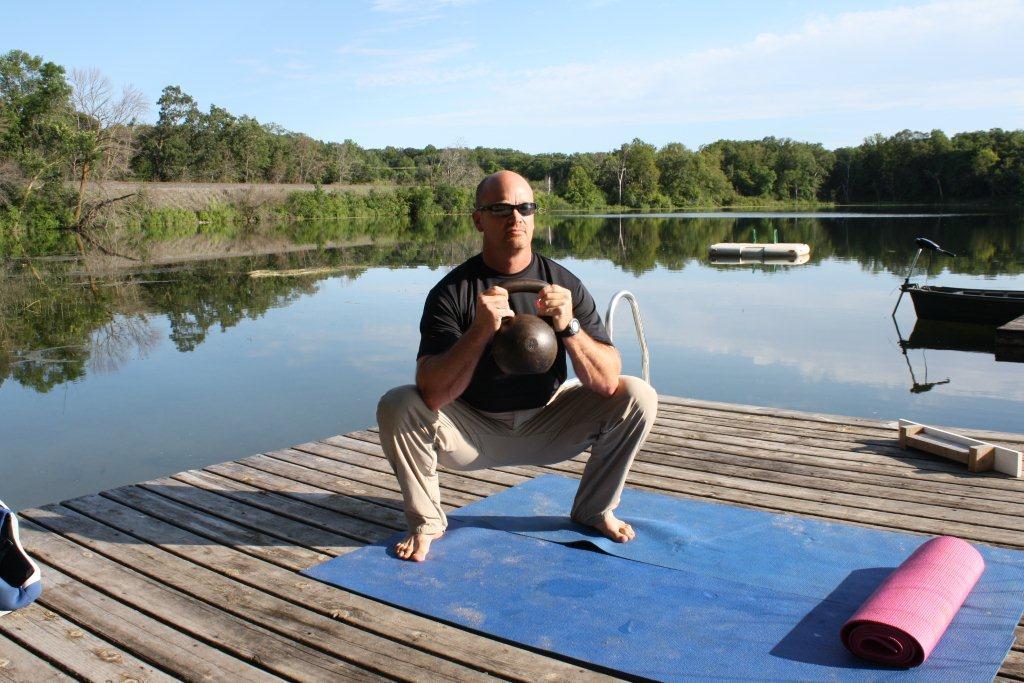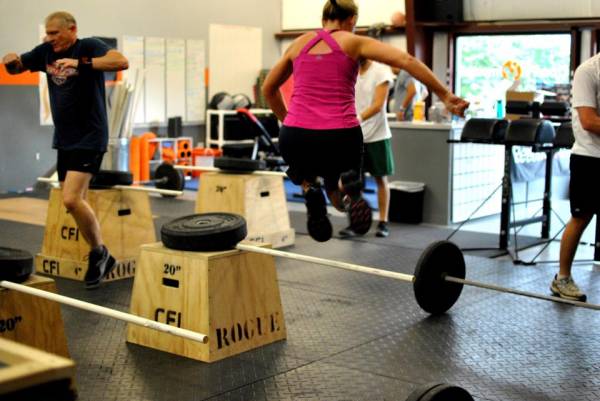The rebound box jump is popular among CrossFit competitors due to its speed and efficiency. Box jumps are a fascinating movement that can be an incredible display of athletic ability, but the rebound jump is a movement that should not be taken lightly. The danger of box jumps is twofold. The first danger is not making the initial jump and ending up with skinned shins. You can suffer deep bruising and have to take significant time out from training. The second and more serious danger is tearing or straining your Achilles tendon during the takeoff or landing.
If you are a competitive athlete you most likely have great coordination, strength, stability, mobility, and you have a great power-to-weight ratio. But even some physical specimens have been cut down in the CrossFit Games when there were too many jumps in the workouts. NSCA guidelines state that beginners should have between eighty to 100 impacts per plyometric training session, and there should be less than half of that number for anyone who is deconditioned.1 In addition, plyometrics are always about developing explosive power and ability to absorb a landing, therefore these amounts are split into many different sets during a session.
Keep in mind the NSCA is referring to college athletes and they are still setting this limit to this number of impacts. The NSCA also recommends a limited number of plyometric training sessions per week. If you are a beginner you should have significantly less plyometric work than these college athletes. Beginners not only lack the tendon durability and mobility, but they don’t have the muscular force to absorb impact as well. Beginners also tend to carry additional weight. If you are overweight and have a high percentage of body fat, you now have to absorb all of the extra weight.
Here are some rules to follow for your plyometric training:
- Rule #1: Be able to perform a competent un-weighted squat before trying any height box jump.
- Rule #2: Be able to perform a bodyweight weighted squat before doing depth or rebound jumps, if you jump onto a box before you can meet this standard step down.
- Rule #3: Never jump off of something you can’t jump onto.
- Rule #4: Never jump off something that you can’t absorb the landing smoothly and with confidence.
- Rule #5: Landing is more important than jumping.
 For training progressions, begin with bodyweight squats and establish competent movement. Having a full bodyweight squat will ensure basic strength, stability, and range of motion for jumping. After your bodyweight squat is up to par, start with air jumps. For an air jump you simply jump off the ground a few inches and land softly. Develop your landing technique, ground reactivity, and movement pattern with a small amount of force first.
For training progressions, begin with bodyweight squats and establish competent movement. Having a full bodyweight squat will ensure basic strength, stability, and range of motion for jumping. After your bodyweight squat is up to par, start with air jumps. For an air jump you simply jump off the ground a few inches and land softly. Develop your landing technique, ground reactivity, and movement pattern with a small amount of force first.
Remember jumping is an expression of power and gives you the ability to get on top of or across something. Jumping at its essence is the ability to move through a space quickly when it is too far or too high to step. However, before we can jump a distance that is further than we can step, we must practice smaller jumps, fine-tuning our movement. Jumping is first a skill and expression of power, only after this may it be turned into a means of conditioning or sport as used in CrossFit. If we reverse this order we are setting ourselves up for injury and a lower performance in the long term.
CrossFit is a sport, don’t ever forget this. If you are training for CrossFit you will break normal rules of training for athletes. In almost every other sport strength and conditioning is auxiliary and designed to enhance performance of your primary sport. This means strength and conditioning must create the balance of getting results while having an extremely low injury rate. If your football athletes are getting hurt in the gym, they can’t play on the field.
 CrossFit, though, is the sport of strength and conditioning, striving to become as fit as possible in all aspects. It is similar to football in that players practice with the pads on some days and other days they hit each other at full speeds. It is necessary to practice before game day, but good coaches use this scenario sparingly. This kind of full-impact training is sport-specific training, not for fitness or health, but to play better and know what it feels like to get hit by a 300lb linebacker before it happens in a game. This kind of training is essential for the competitive or professional athlete, but not for the general fitness clientele.
CrossFit, though, is the sport of strength and conditioning, striving to become as fit as possible in all aspects. It is similar to football in that players practice with the pads on some days and other days they hit each other at full speeds. It is necessary to practice before game day, but good coaches use this scenario sparingly. This kind of full-impact training is sport-specific training, not for fitness or health, but to play better and know what it feels like to get hit by a 300lb linebacker before it happens in a game. This kind of training is essential for the competitive or professional athlete, but not for the general fitness clientele.
Rebound jumps and high volumes of plyometrics should not be done for general population who are simply trying to lose weight or get in shape. These are sport-specific training methods and need to be treated as such. In addition, all CrossFitters need to respect the difficulty of jumps when already tired and or at the end of a chipper or AMRAP. Even if you were able to jump confidently at that height earlier in the workout, it becomes a whole different game after you gas. Respect the jump, respect your body, and enjoy training for a long time.
References:
1. Ebben, W. “Plyometrics: Practical Guidelines for Plyometric Intensity,” NSCA’s Performance Training Journal, accessed 11/1/13.
Photos courtesy of CrossFit Impulse.






